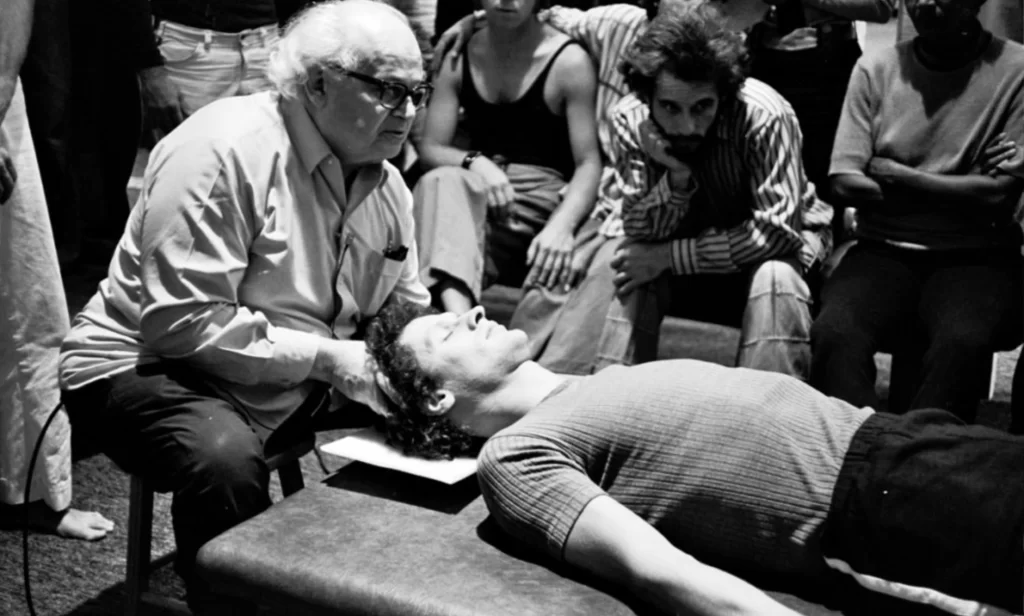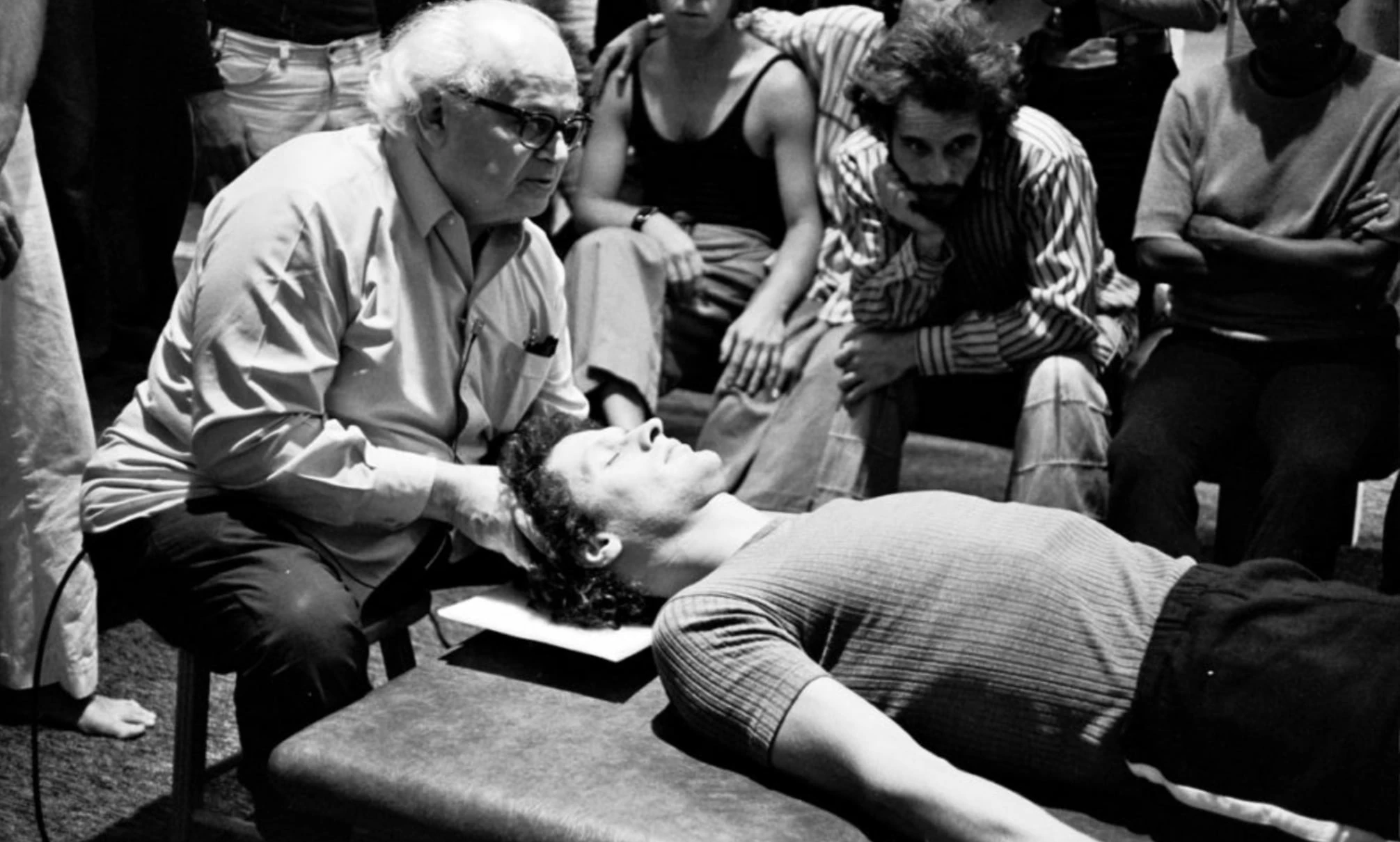My Services

“The aim of the Feldenkrais Method is a person that is organized to move with minimum effort and maximum efficiency, not through muscular strength, but through increased consciousness of how movement works.”
Moshe Feldenkrais
Who was Moshé Feldenkrais?
Moshe Feldenkrais, DSc, was a distinguished scientist and engineer whose career included work at the Curie Institute in Paris in the 1930’s. He was also a respected Judo instructor, and was a founder of the Ju Jitsu Club in Paris.
It was, however, in the relationship between bodily movement and our ways of thinking, feeling and learning that Feldenkrais achieved his greatest success. An injury to his knee in his youth threatened him with severe disability in middle age. Despite being given little hope of ever walking normally, Feldenkrais refused surgery and instead applied his extensive knowledge of anatomy, physiology, psychology and engineering, as well as his mastery of martial arts, to healing his own knee.
During the process he realised the vital importance of working with the whole body and indeed the whole self in order to achieve lasting, radical change. His insights contributed to the development of the new field of somatic education, and continue to influence disciplines such as physical medicine, gerontology, the arts, education and psychology. Moshé Feldenkrais enjoyed respect and acclaim during his lifetime for his contributions to the fields of rehabilitation, athletic and performing arts training. He died peacefully in Tel Aviv at the age of 80. For more information about Dr Moshé Feldenkrais please refer to Wikipedia.
What is the Feldenkrais Method®?
The Feldenkrais Method® was developed from 40 years of study and research by Dr Moshé Feldenkrais based on his understanding of biomechanics, physics, neurology, engineering, martial arts and psychology.
It is a unique learning approach that uses gentle movement and guided attention to improve your ability to control and coordinate your action and discover ways of moving with less effort.The Feldenkrais Method® can be experienced in two ways.
- Individual sessions which are called Functional Integration® (FI) lessons
- Group classes which are termed Awareness Through Movement® (ATM) lessons.
Me and Feldenkrais (My Feldenkrais experience as a physiotherapist student)
When I was studying Physiotherapy at the Sapienza University of Rome, back in 2003, I had the luck to meet Professor Pina Guadagnolo who taught me about Feldenkrais. I still remember the first time, she mentioned Feldenkrais and I said “Felden.. what??” Then, she only replied “shoes off and lie on the floor” That was my first Awareness Through Movements (ATM) lesson. I still remember that “new sensation”, like a baby learning to walk again in a proper and easy way. Practically Feldenkrais is a method based on Moshe Feldenkrais’ studies. The Feldenkrais Method helps people with backaches or muscle and joint pain to discover new options for easier, more pleasurable movement. It helps patients, athletes, musicians, artists to improve themselves for competition or performance. In my field this method helped me a lot to reconnect patients’ bodies after a surgeries or different pathologies.
In my last year at the university, thanks to Professor Guadagnolo, I became also very interested in neuromuscular re-education and motor learning. I started focusing on re-training movement patterns to optimize patient functions and improve their physical conditions. When I finished my degree Pina advised me to continue my studies and she sent me for additional Feldenkrais training to Florence, at the Feldenkrais association in Italy, where I met Ruthy Alon and Isabella Turino.
What an amazing experience I had in the 4 years I studied with them. I also had the opportunity to meet lovely people colleagues that become friends for all my life. During the first year of training, I felt so sad because as a physio I had only little time for treatments with my patients, and teaching people about movements and how to improve their posture requires time. So what I did was short Feldenkrais lessons where I was teaching them how to sit, how to roll, how to walk. The feedback I received was excellent and I felt so happy for my patients.
However, the biggest challenge for me was how to adapt a learning model into a medical model. What I had noticed was that patients were expecting from physiotherapists mostly exercises, manual therapy, and more exercises, but I knew I could do more than that. During my third year of Feldenkrais training, I noticed that it was getting easier to blend the Feldenkrais Method into traditional physical therapy sessions and I felt so confident talking with patients, colleagues and consultants about the method and I felt blessed for what I learnt in that 4 years! I learnt to work with my patients and I was no longer thinking about fixing or correcting their problems. Instead, I focused on improving their functions and lives through movement.
Now, after all those years as a Physiotherapist, I understand that the true essence of the Feldenkrais Method for me was first learning myself and then try to make my patients’ life simpler with little things, step by step. I try to teach how to improve their movements but most of the time I enjoy speaking with them and helping them with my knowledge. Obviously, I’m also a physio so I focus part of “my lessons” on strengthening and stretching their bodies but what I essentially teach them is to move and connect easily.
I’d like to thank my educational trainers (Pina Guadagnolo and Isabella Turino) and Ruth Alon, the most formidable lady that I have ever met. Thanks to them I now feel able to help other people.
More info

“The aim of the Feldenkrais Method is a person that is organized to move with minimum effort and maximum efficiency, not through muscular strength, but through increased consciousness of how movement works.”
Moshe Feldenkrais
Who was Moshé Feldenkrais?
Moshe Feldenkrais, DSc, was a distinguished scientist and engineer whose career included work at the Curie Institute in Paris in the 1930’s. He was also a respected Judo instructor, and was a founder of the Ju Jitsu Club in Paris.
It was, however, in the relationship between bodily movement and our ways of thinking, feeling and learning that Feldenkrais achieved his greatest success. An injury to his knee in his youth threatened him with severe disability in middle age. Despite being given little hope of ever walking normally, Feldenkrais refused surgery and instead applied his extensive knowledge of anatomy, physiology, psychology and engineering, as well as his mastery of martial arts, to healing his own knee.
During the process he realised the vital importance of working with the whole body and indeed the whole self in order to achieve lasting, radical change. His insights contributed to the development of the new field of somatic education, and continue to influence disciplines such as physical medicine, gerontology, the arts, education and psychology. Moshé Feldenkrais enjoyed respect and acclaim during his lifetime for his contributions to the fields of rehabilitation, athletic and performing arts training. He died peacefully in Tel Aviv at the age of 80. For more information about Dr Moshé Feldenkrais please refer to Wikipedia.
What is the Feldenkrais Method®?
The Feldenkrais Method® was developed from 40 years of study and research by Dr Moshé Feldenkrais based on his understanding of biomechanics, physics, neurology, engineering, martial arts and psychology.
It is a unique learning approach that uses gentle movement and guided attention to improve your ability to control and coordinate your action and discover ways of moving with less effort.The Feldenkrais Method® can be experienced in two ways.
- Individual sessions which are called Functional Integration® (FI) lessons
- Group classes which are termed Awareness Through Movement® (ATM) lessons.
Me and Feldenkrais (My Feldenkrais experience as a physiotherapist student)
When I was studying Physiotherapy at the Sapienza University of Rome, back in 2003, I had the luck to meet Professor Pina Guadagnolo who taught me about Feldenkrais. I still remember the first time, she mentioned Feldenkrais and I said “Felden.. what??” Then, she only replied “shoes off and lie on the floor” That was my first Awareness Through Movements (ATM) lesson. I still remember that “new sensation”, like a baby learning to walk again in a proper and easy way. Practically Feldenkrais is a method based on Moshe Feldenkrais’ studies. The Feldenkrais Method helps people with backaches or muscle and joint pain to discover new options for easier, more pleasurable movement. It helps patients, athletes, musicians, artists to improve themselves for competition or performance. In my field this method helped me a lot to reconnect patients’ bodies after a surgeries or different pathologies.
In my last year at the university, thanks to Professor Guadagnolo, I became also very interested in neuromuscular re-education and motor learning. I started focusing on re-training movement patterns to optimize patient functions and improve their physical conditions. When I finished my degree Pina advised me to continue my studies and she sent me for additional Feldenkrais training to Florence, at the Feldenkrais association in Italy, where I met Ruthy Alon and Isabella Turino.
What an amazing experience I had in the 4 years I studied with them. I also had the opportunity to meet lovely people colleagues that become friends for all my life. During the first year of training, I felt so sad because as a physio I had only little time for treatments with my patients, and teaching people about movements and how to improve their posture requires time. So what I did was short Feldenkrais lessons where I was teaching them how to sit, how to roll, how to walk. The feedback I received was excellent and I felt so happy for my patients.
However, the biggest challenge for me was how to adapt a learning model into a medical model. What I had noticed was that patients were expecting from physiotherapists mostly exercises, manual therapy, and more exercises, but I knew I could do more than that. During my third year of Feldenkrais training, I noticed that it was getting easier to blend the Feldenkrais Method into traditional physical therapy sessions and I felt so confident talking with patients, colleagues and consultants about the method and I felt blessed for what I learnt in that 4 years! I learnt to work with my patients and I was no longer thinking about fixing or correcting their problems. Instead, I focused on improving their functions and lives through movement.
Now, after all those years as a Physiotherapist, I understand that the true essence of the Feldenkrais Method for me was first learning myself and then try to make my patients’ life simpler with little things, step by step. I try to teach how to improve their movements but most of the time I enjoy speaking with them and helping them with my knowledge. Obviously, I’m also a physio so I focus part of “my lessons” on strengthening and stretching their bodies but what I essentially teach them is to move and connect easily.
I’d like to thank my educational trainers (Pina Guadagnolo and Isabella Turino) and Ruth Alon, the most formidable lady that I have ever met. Thanks to them I now feel able to help other people.









